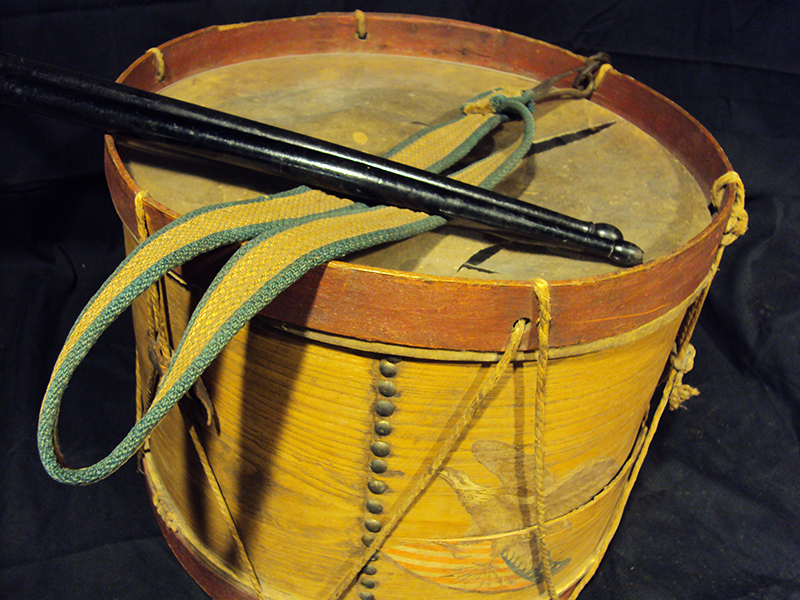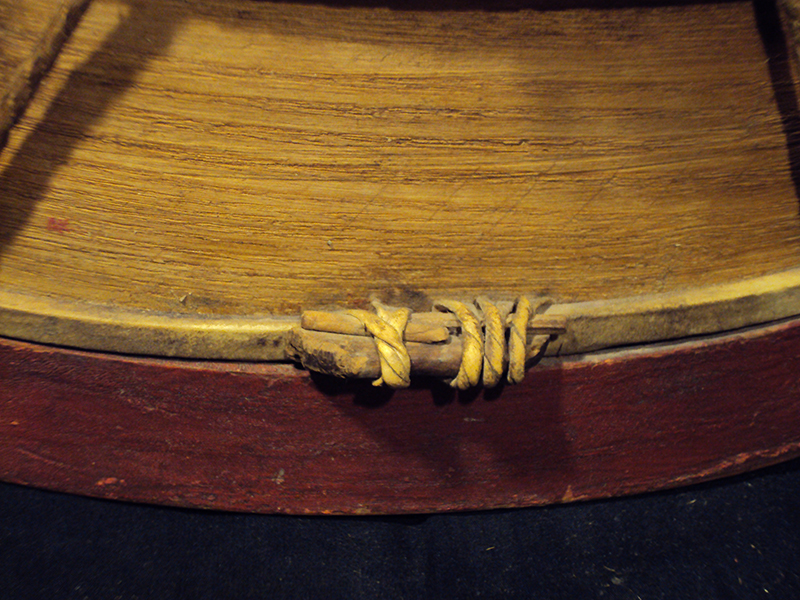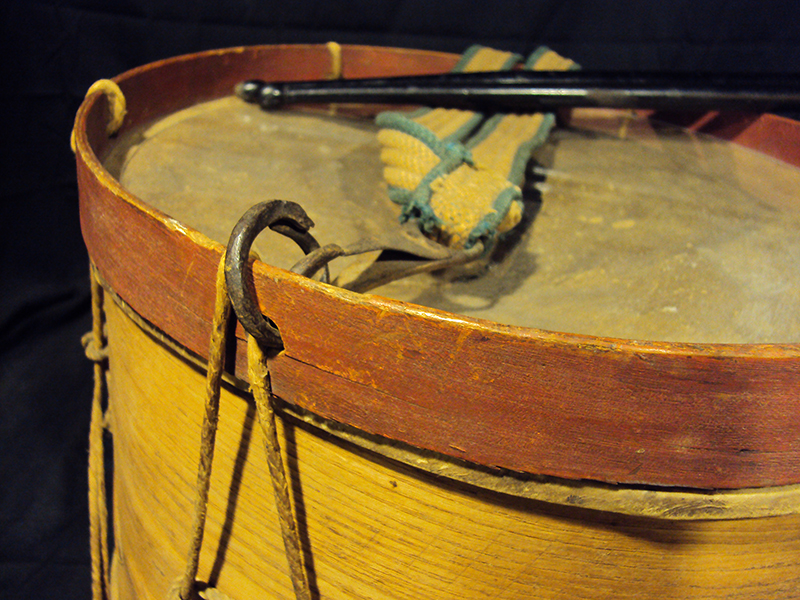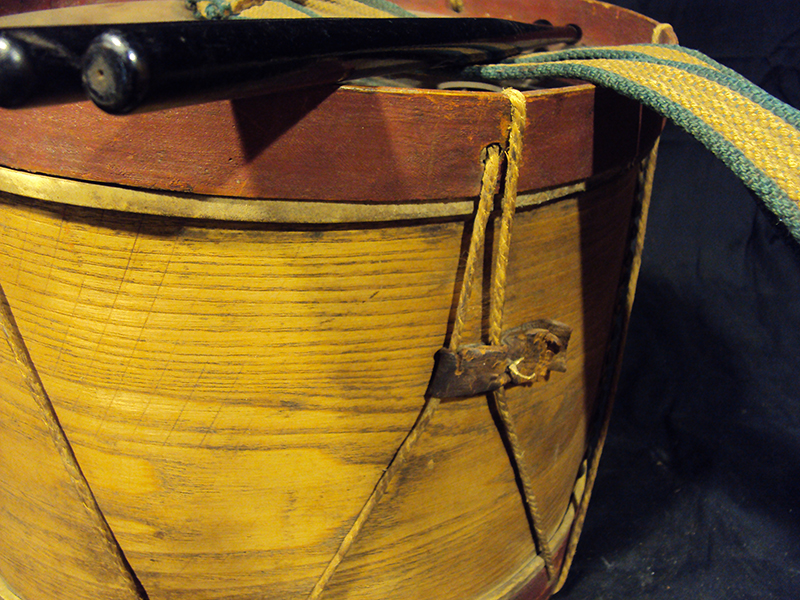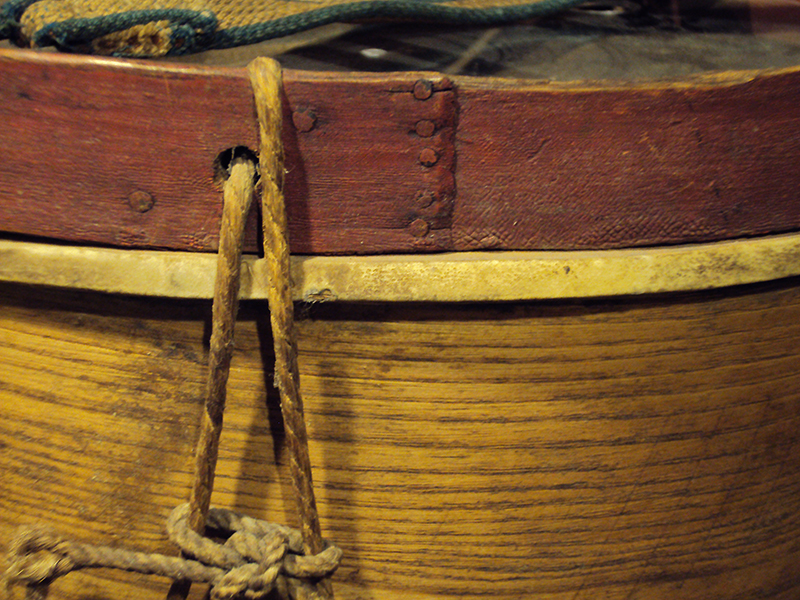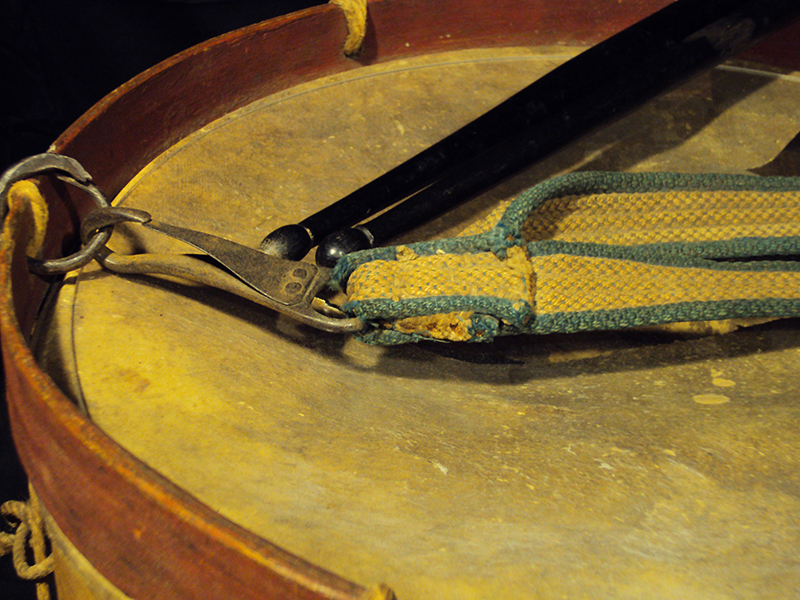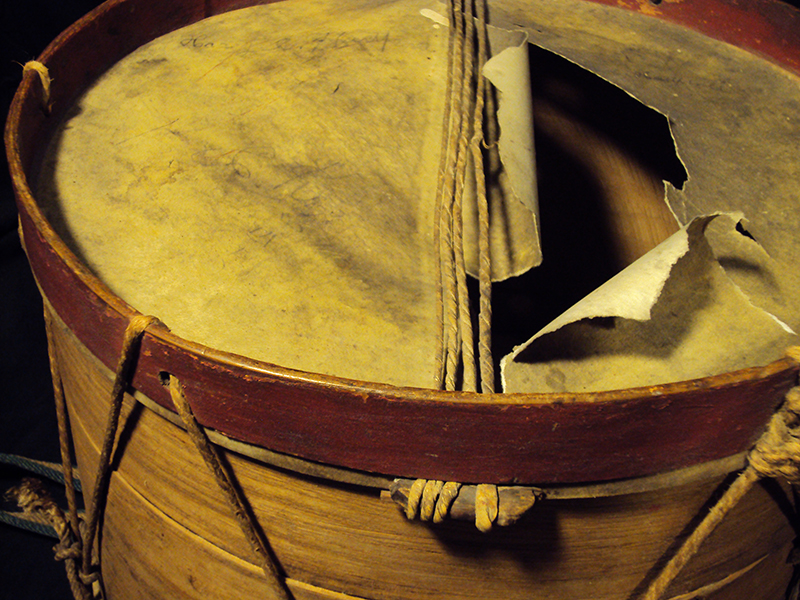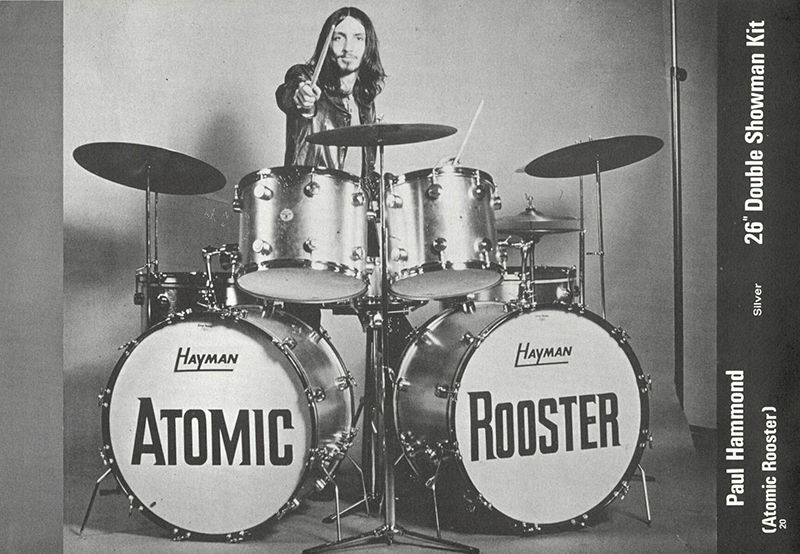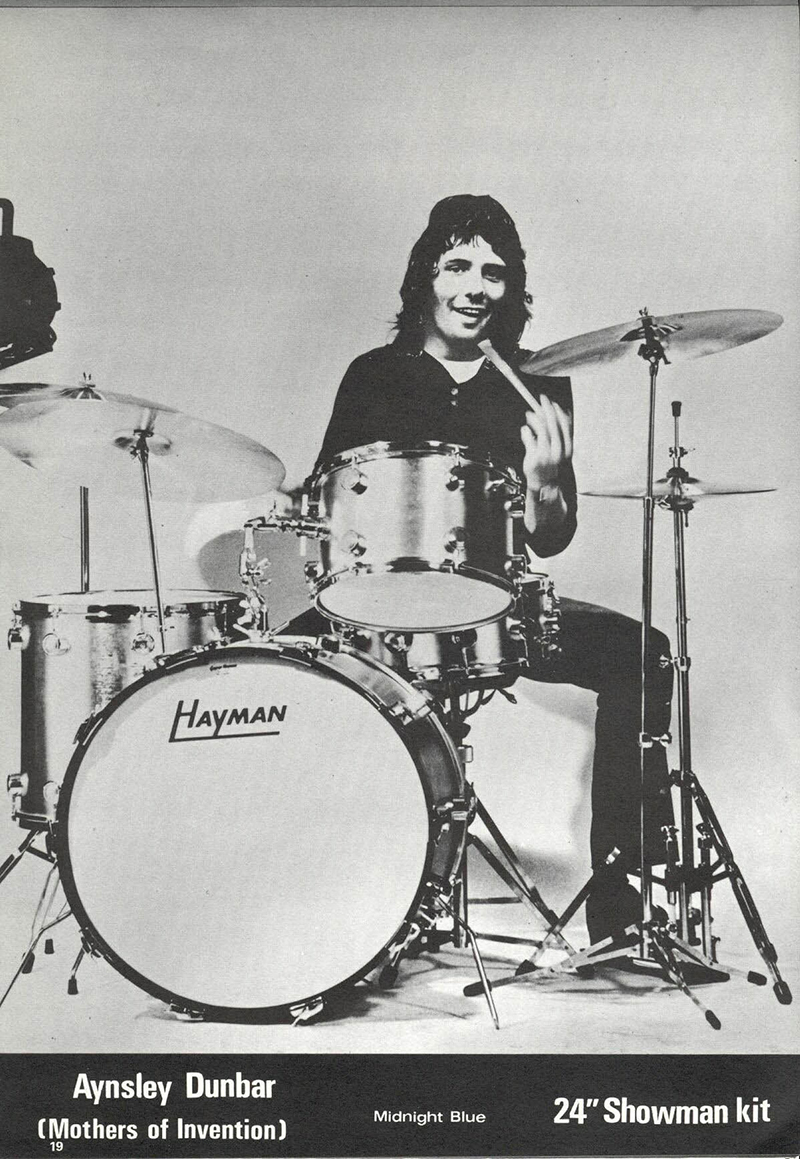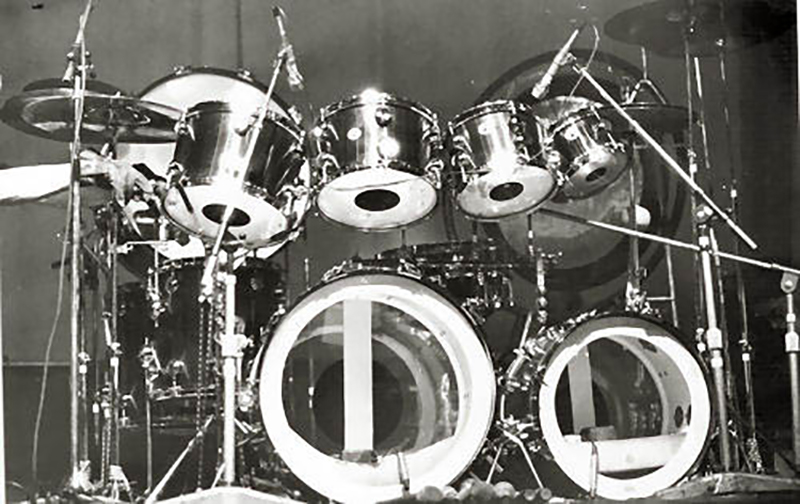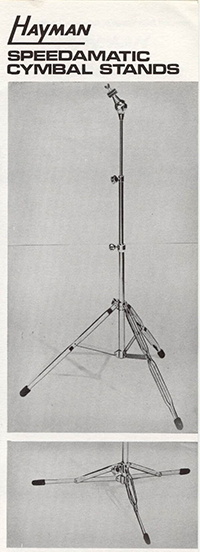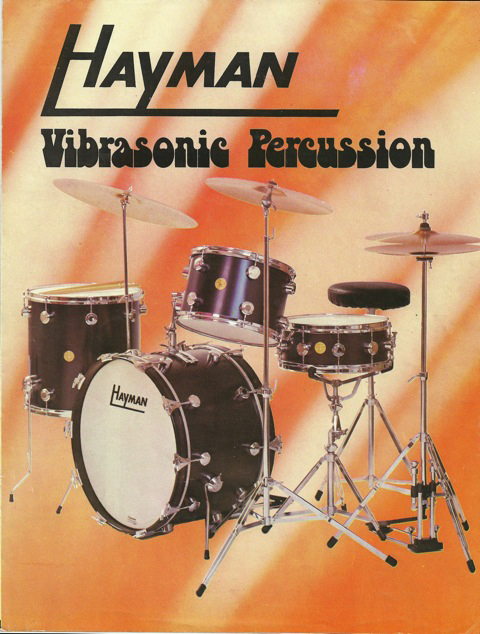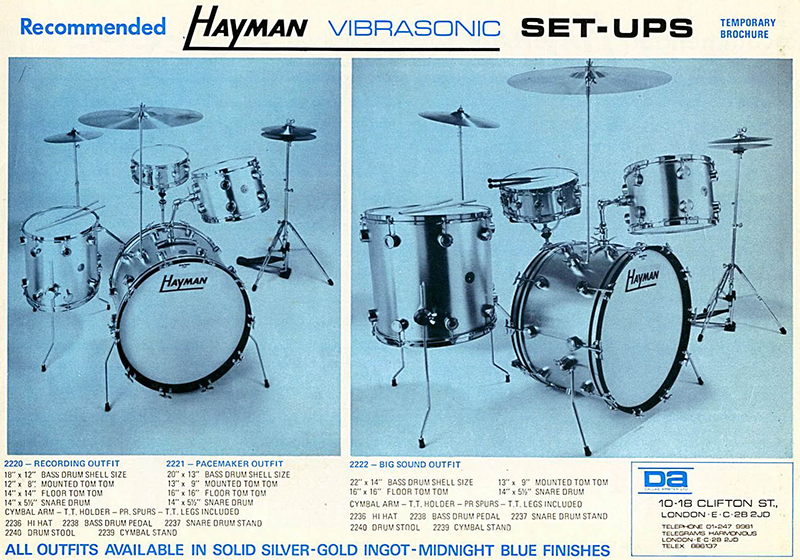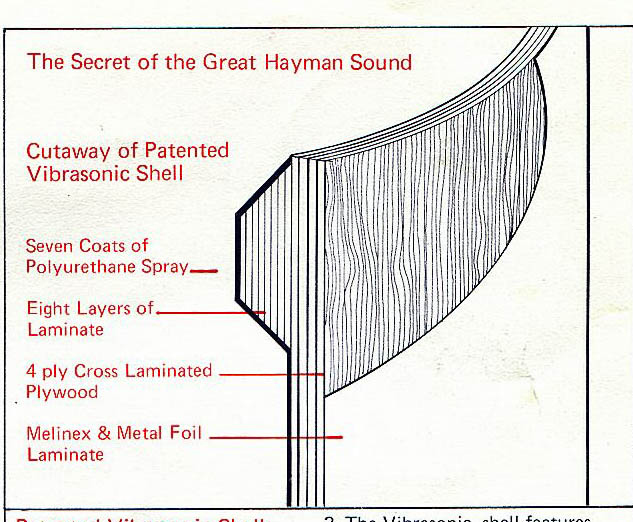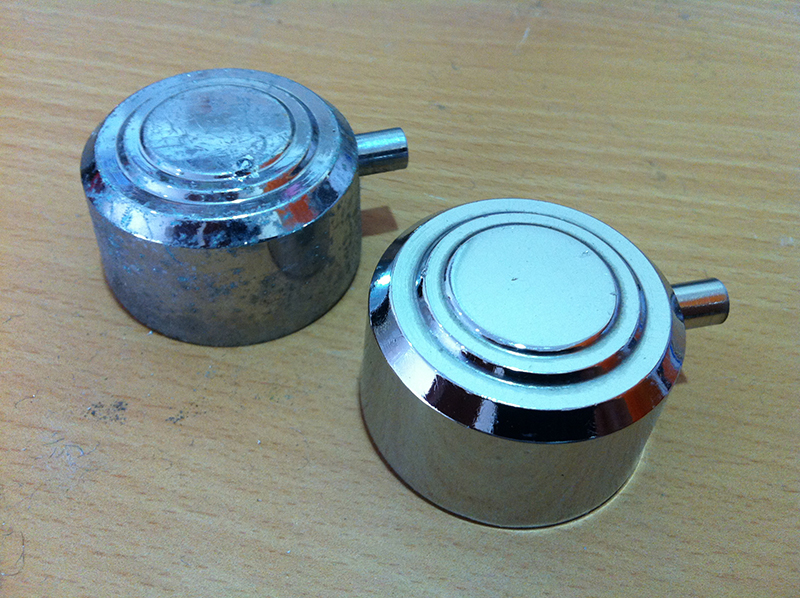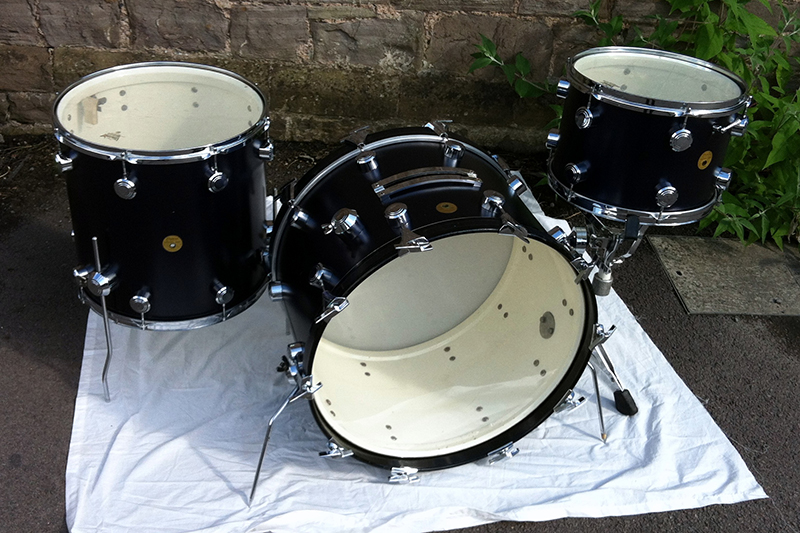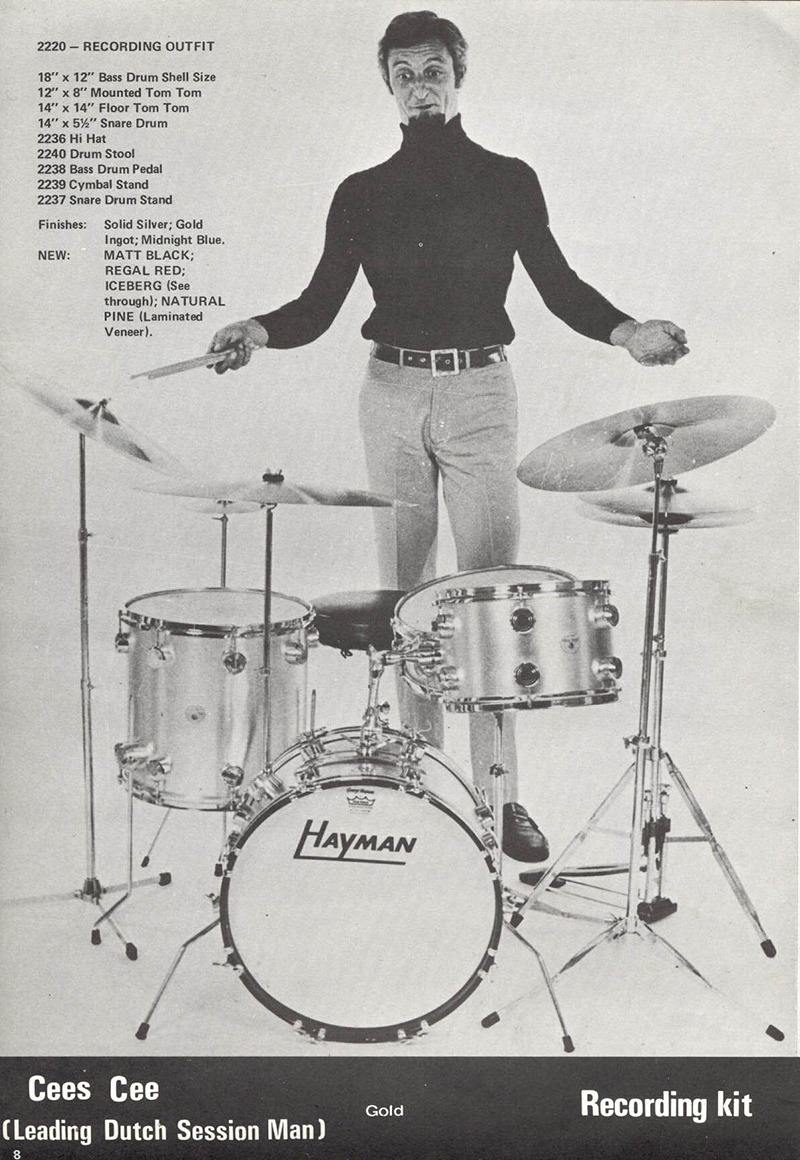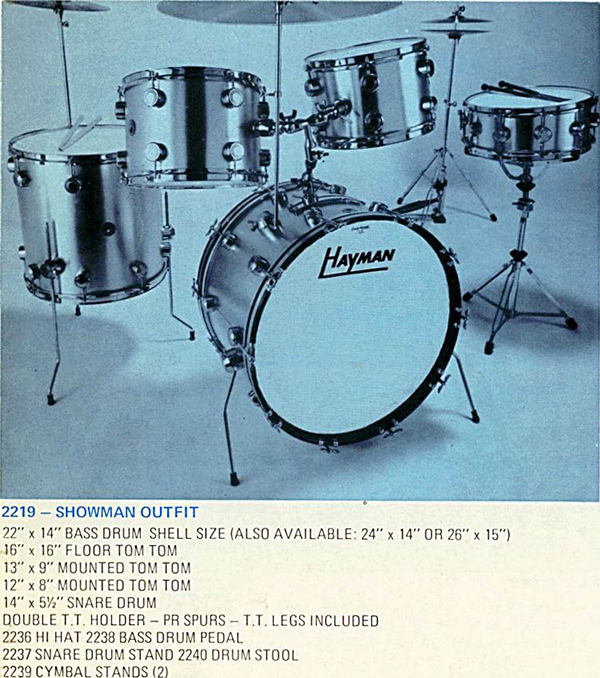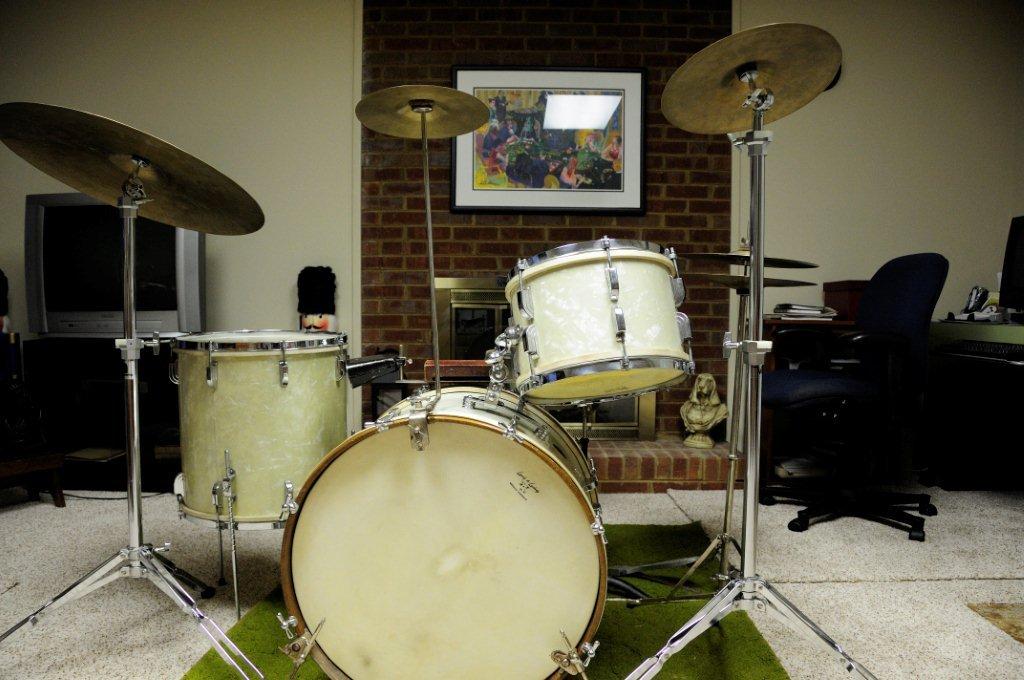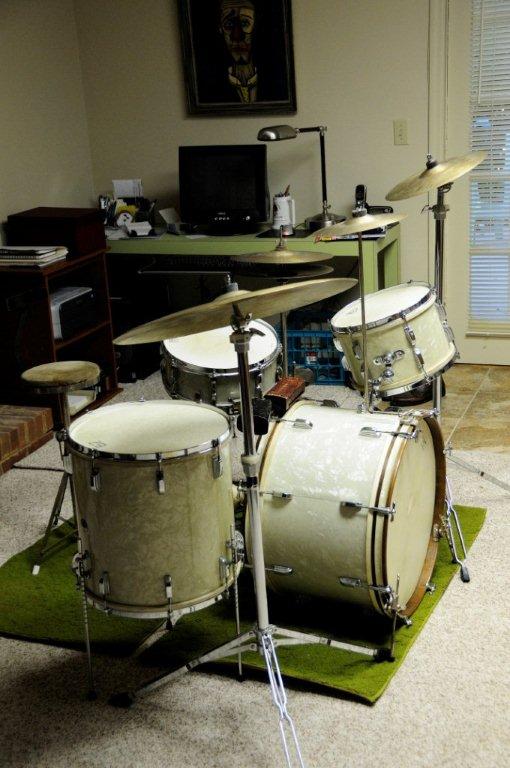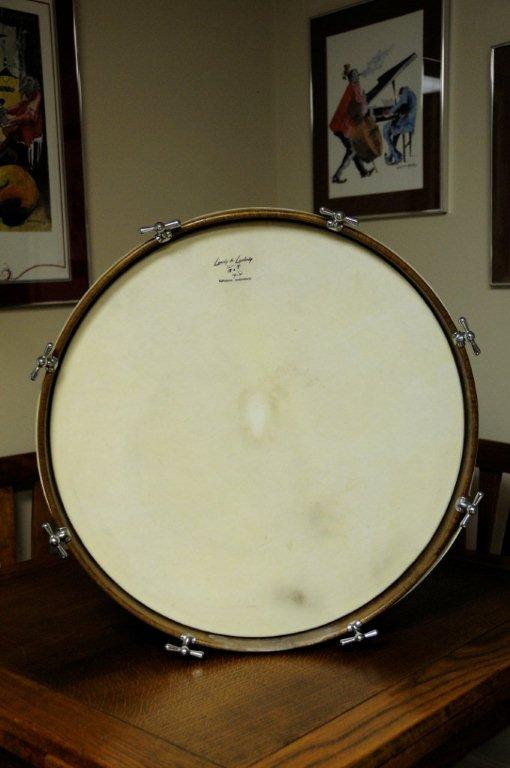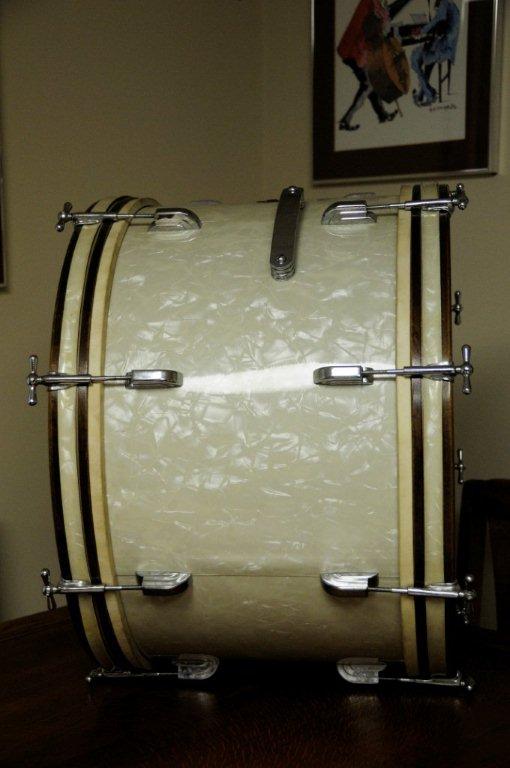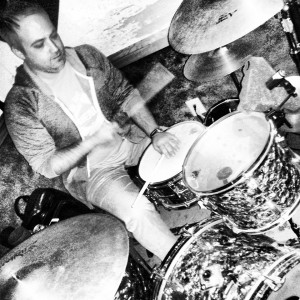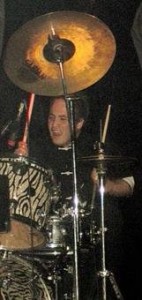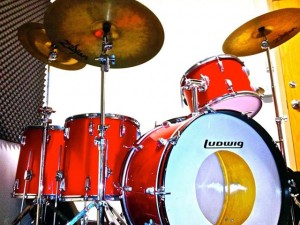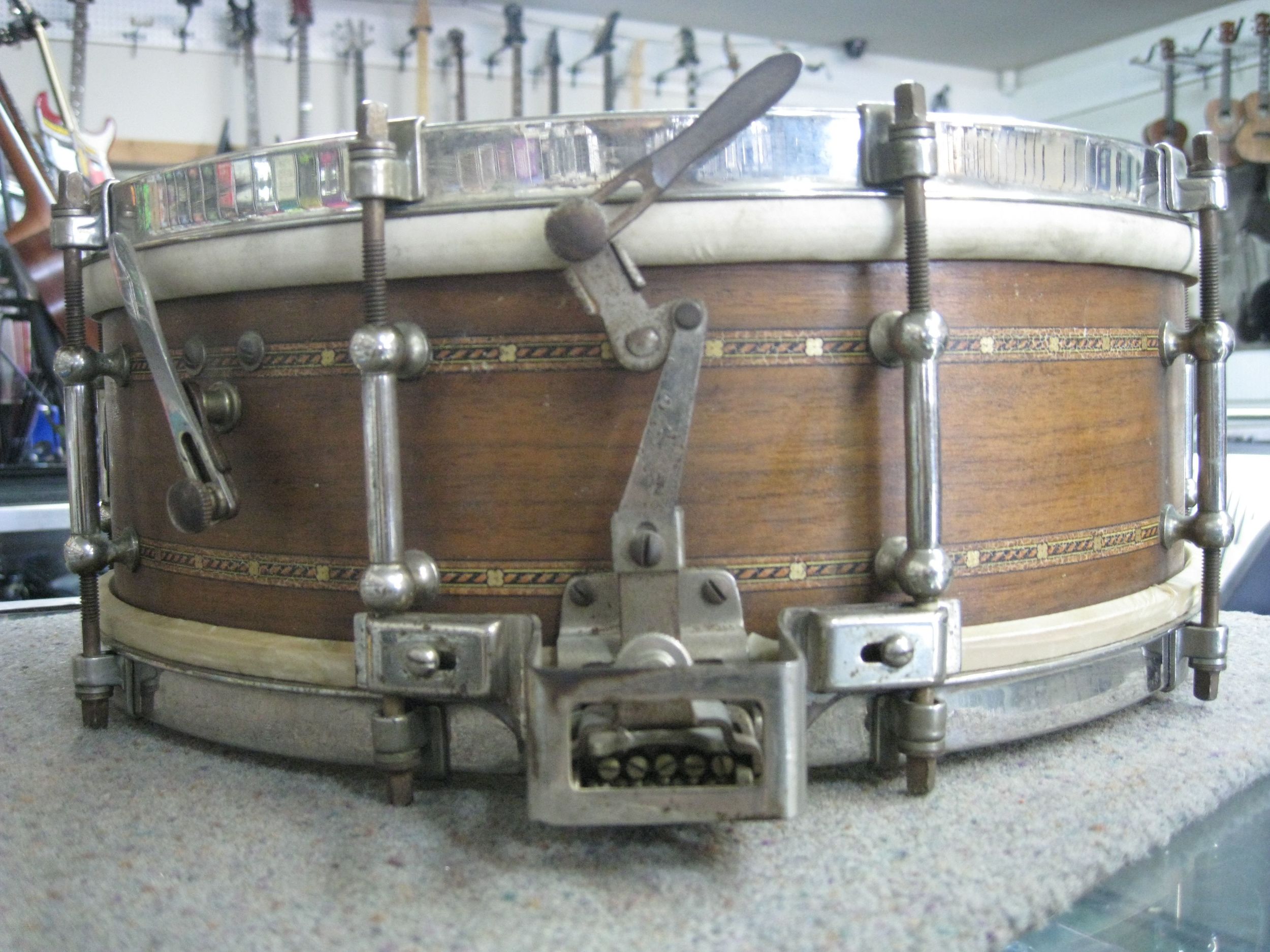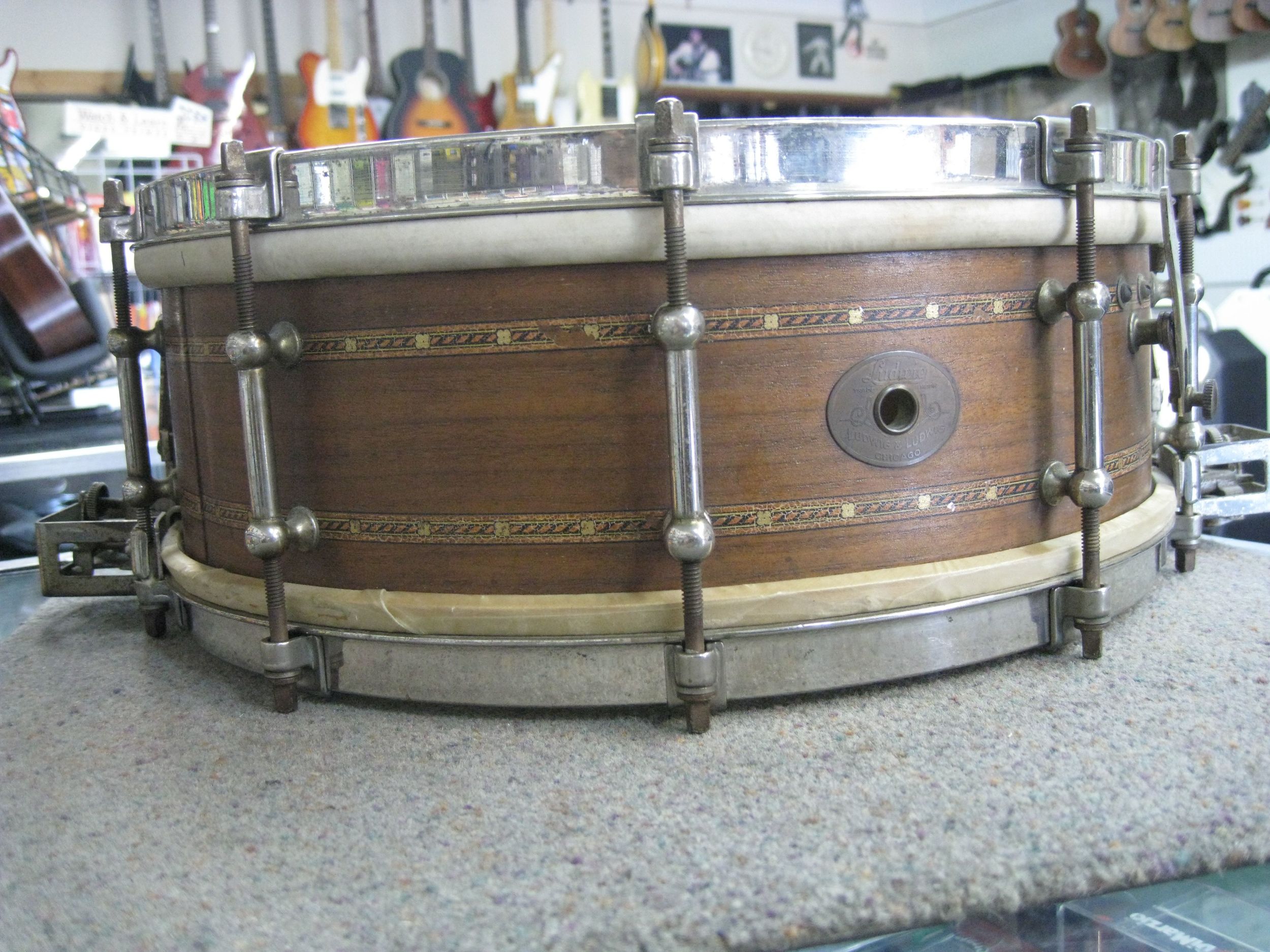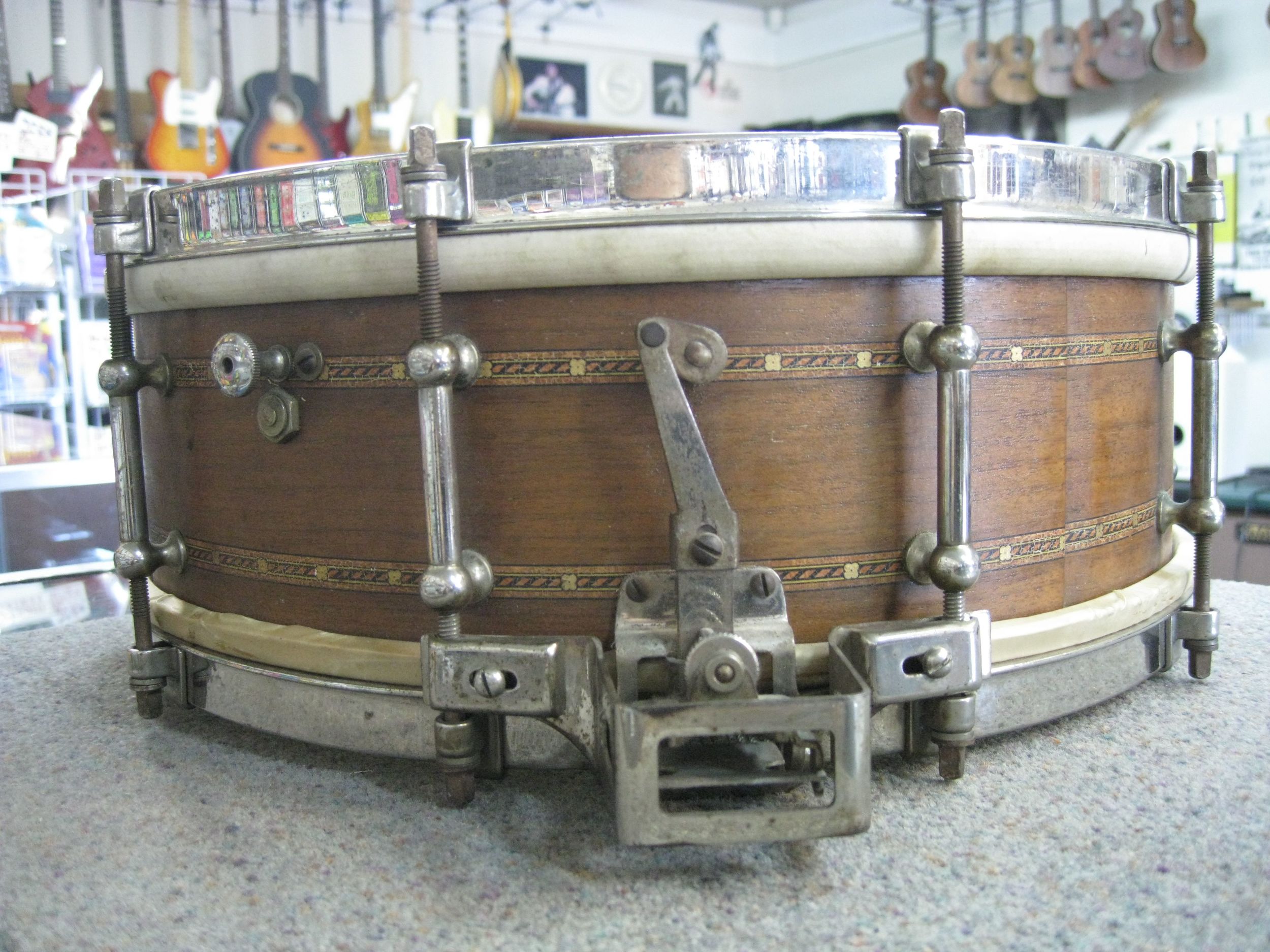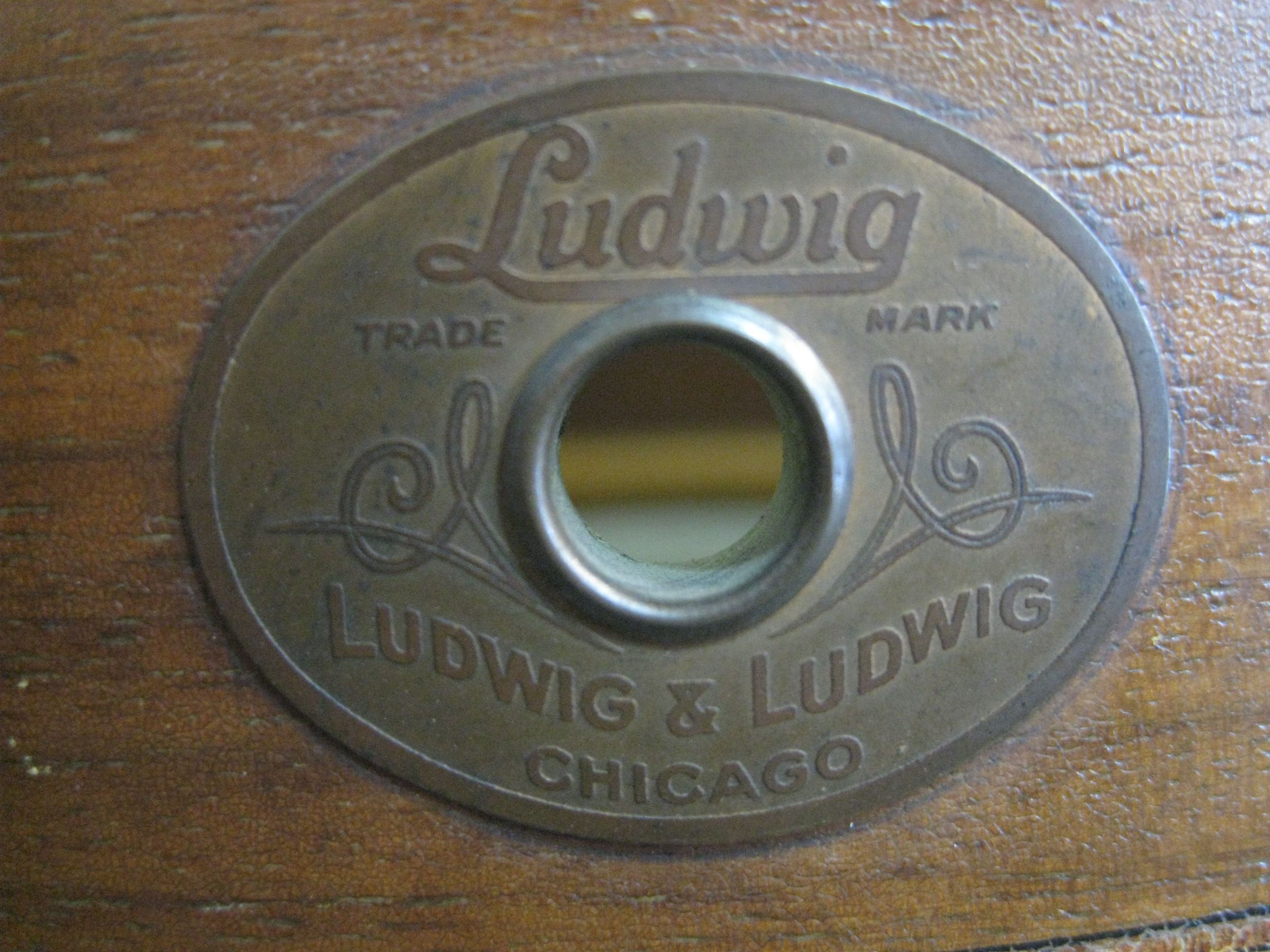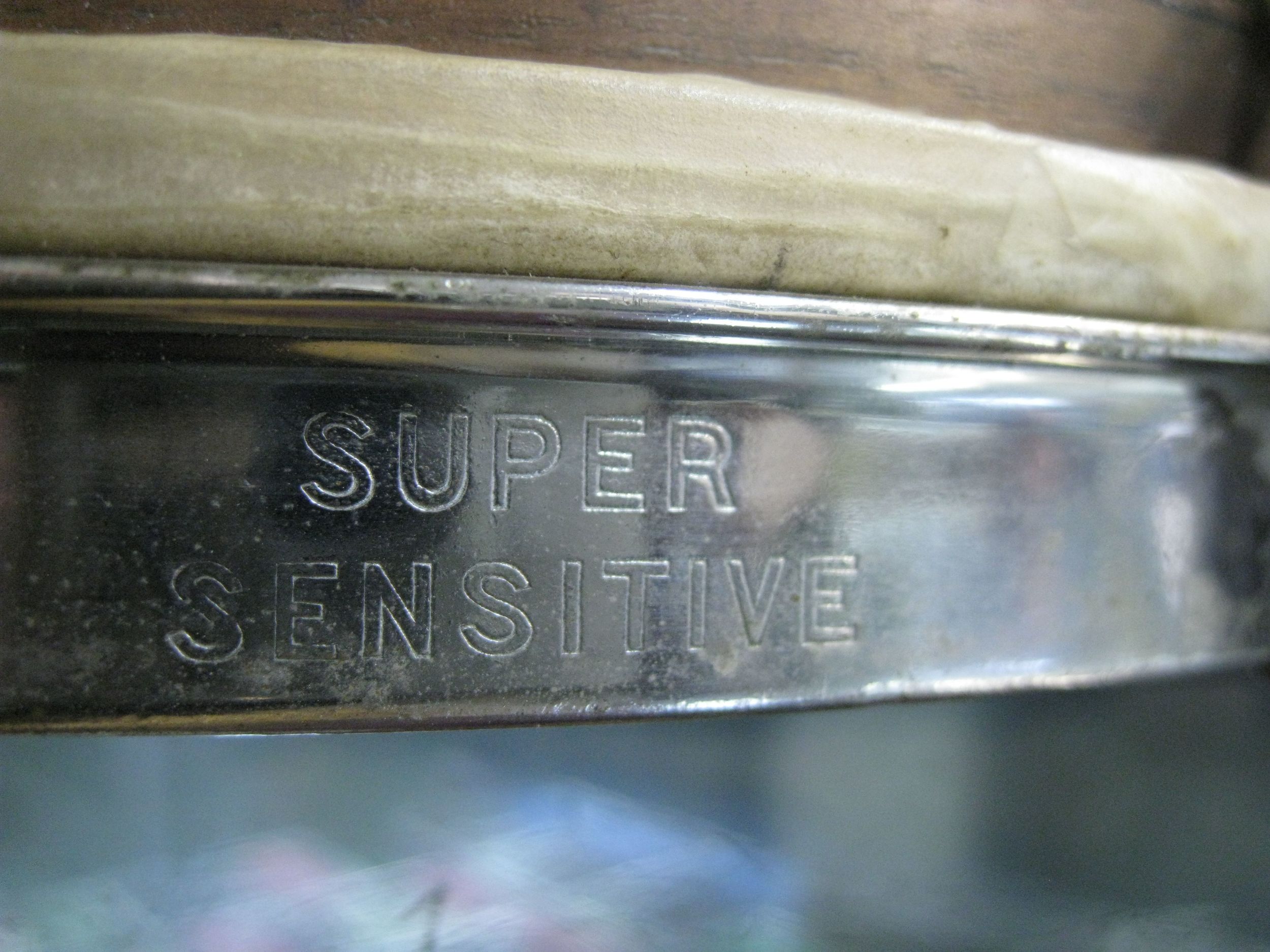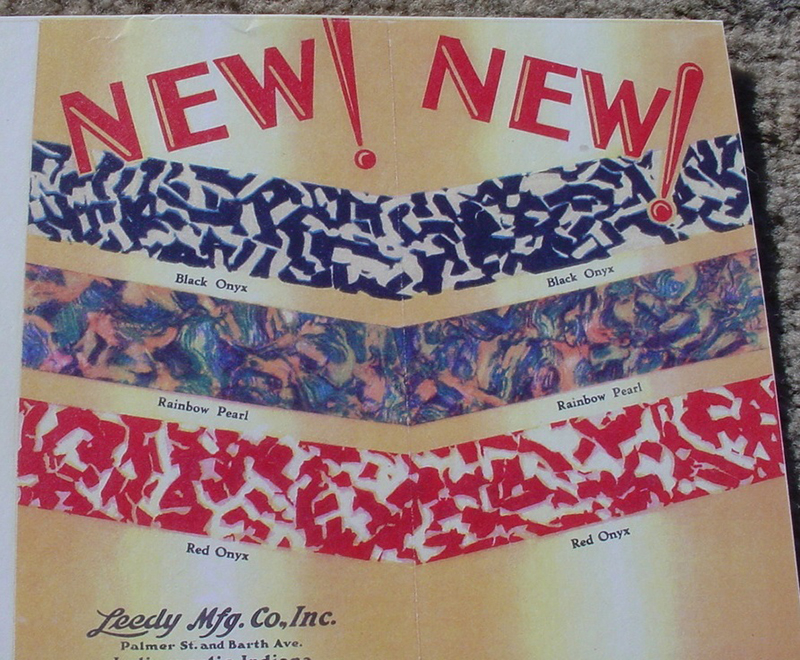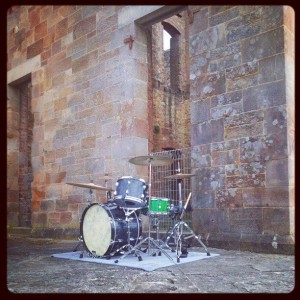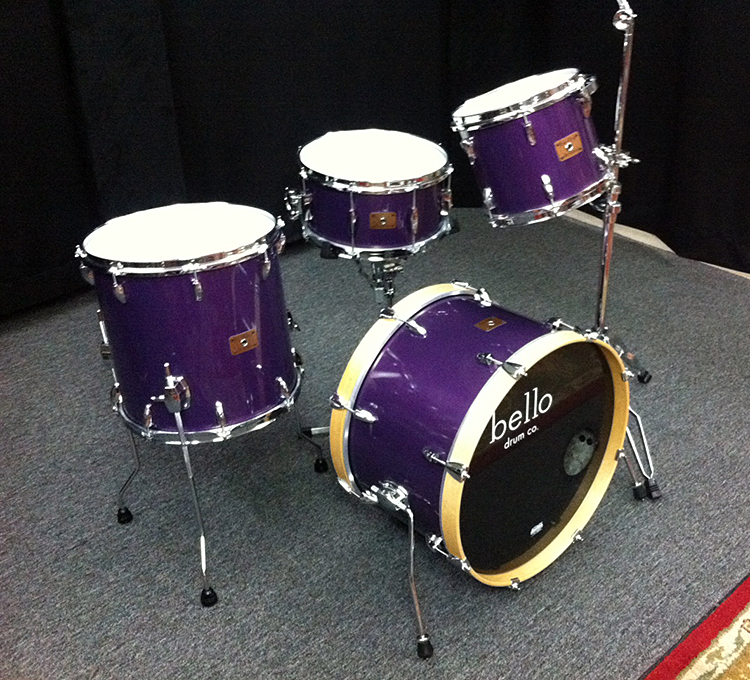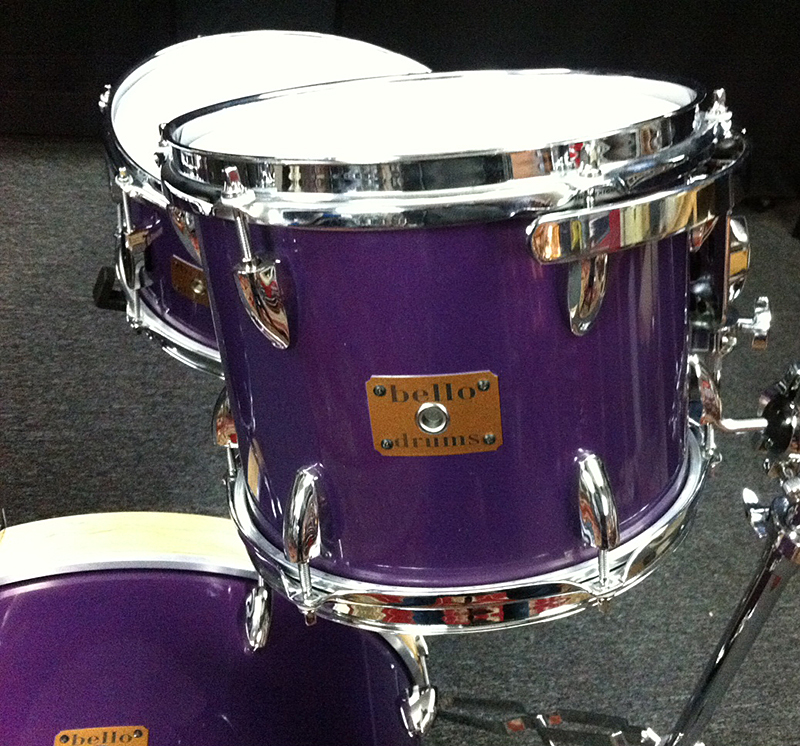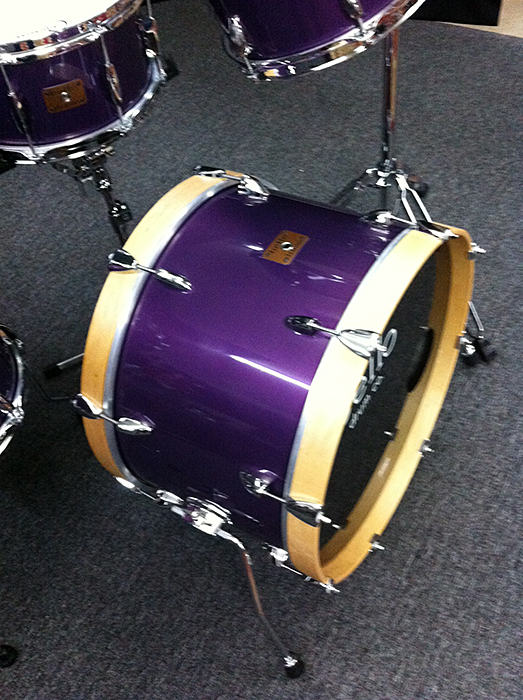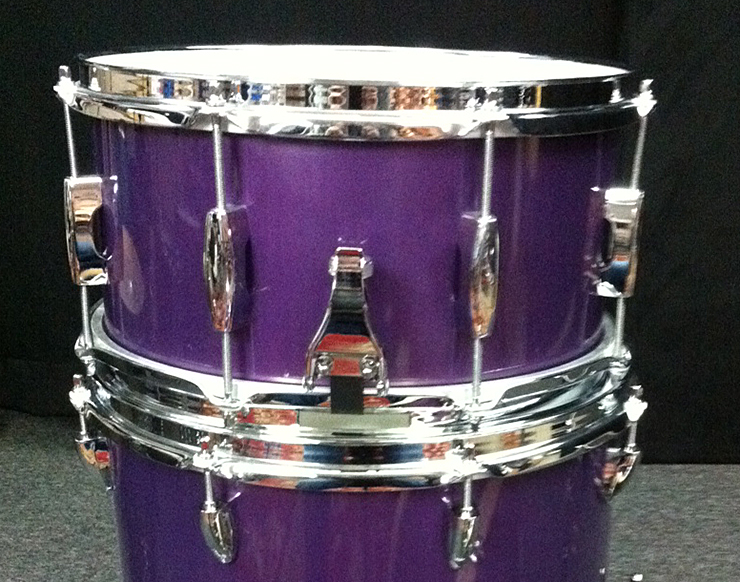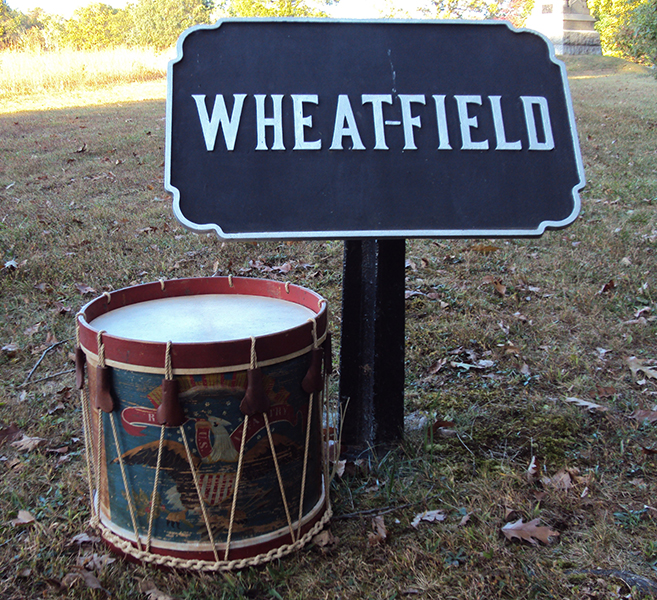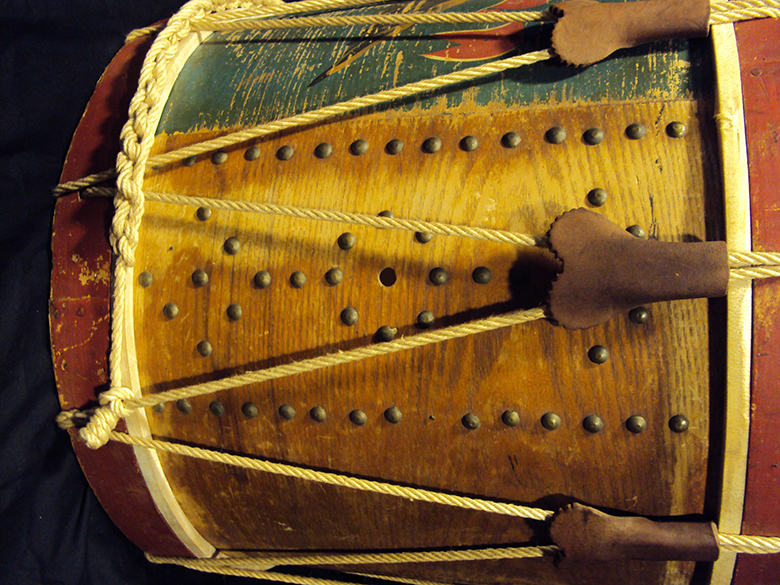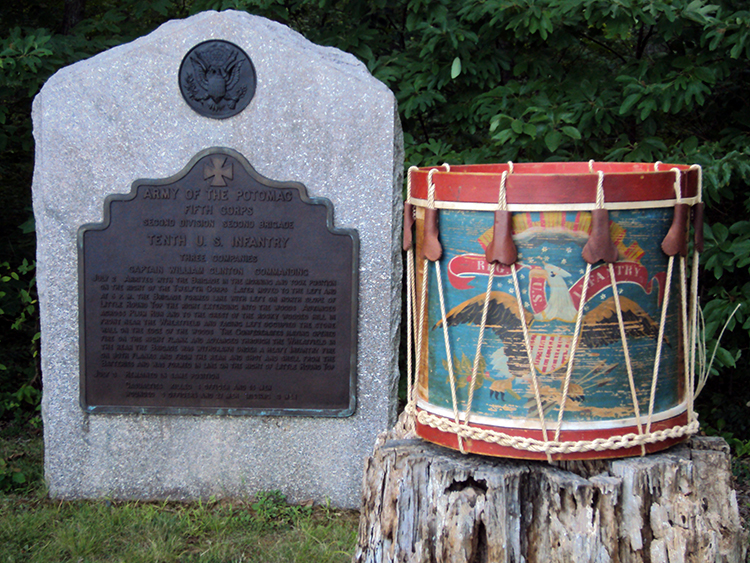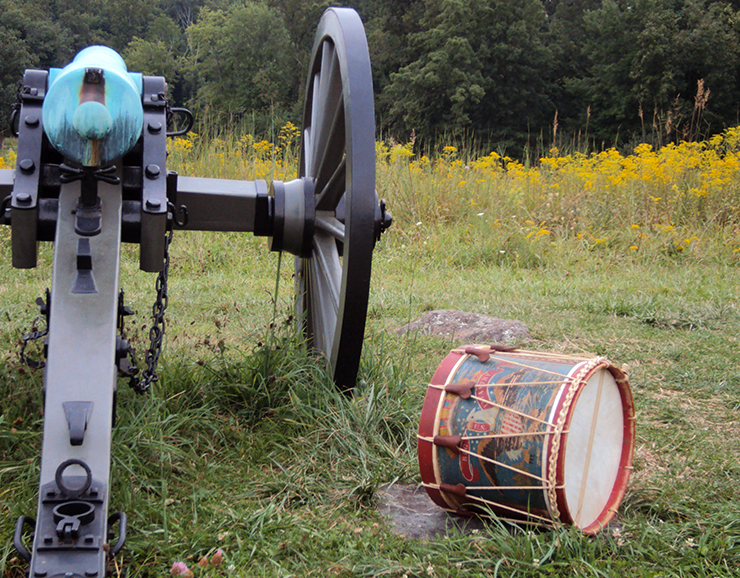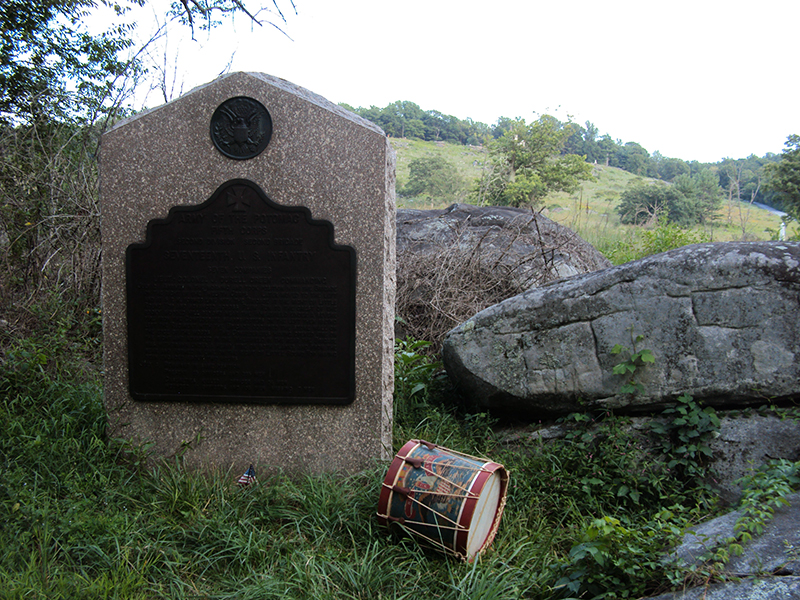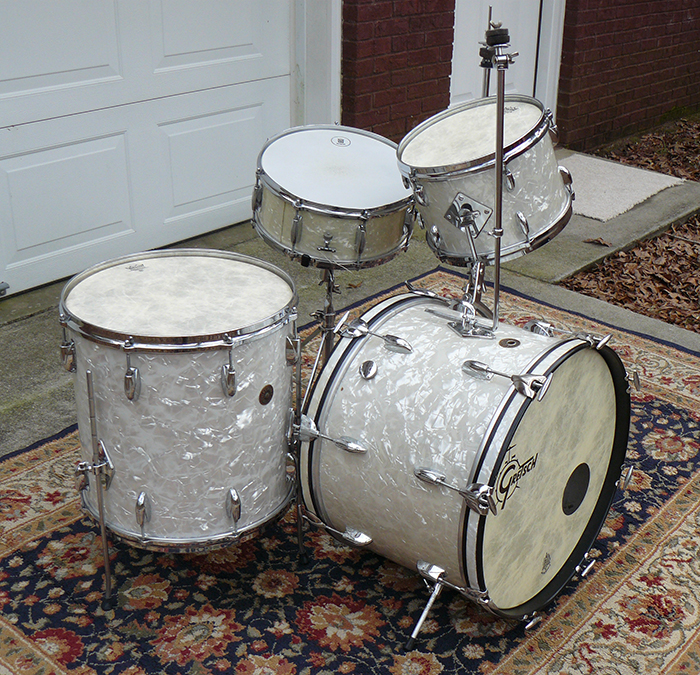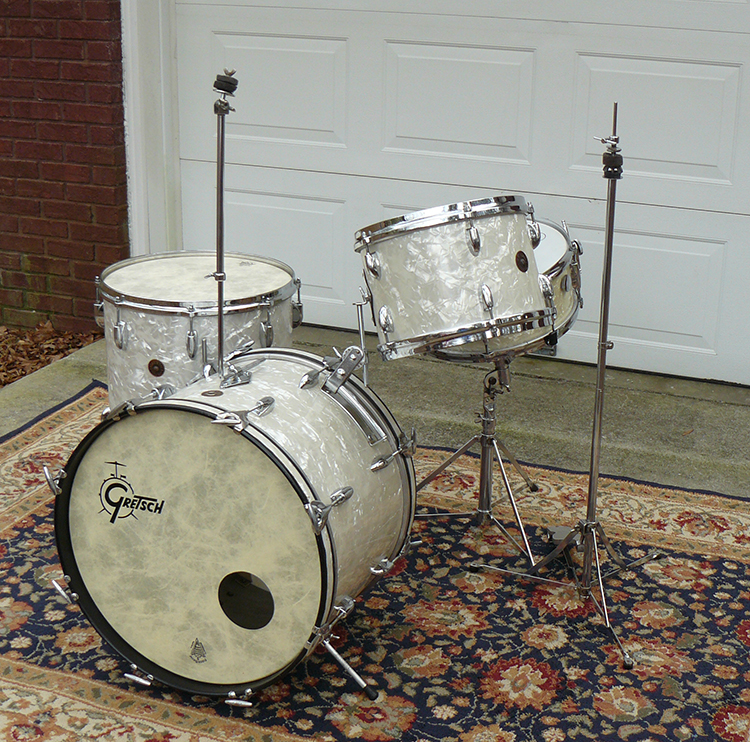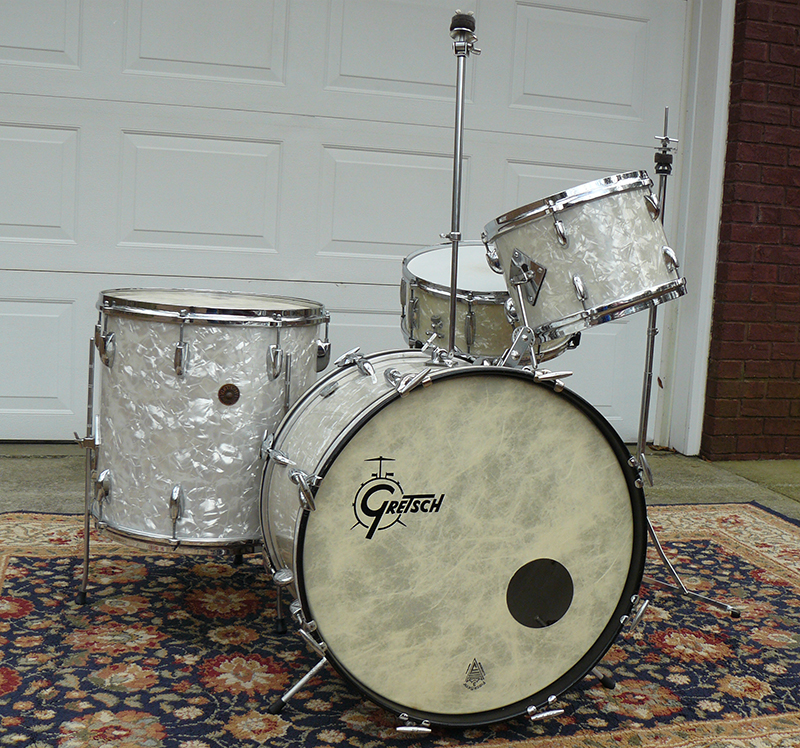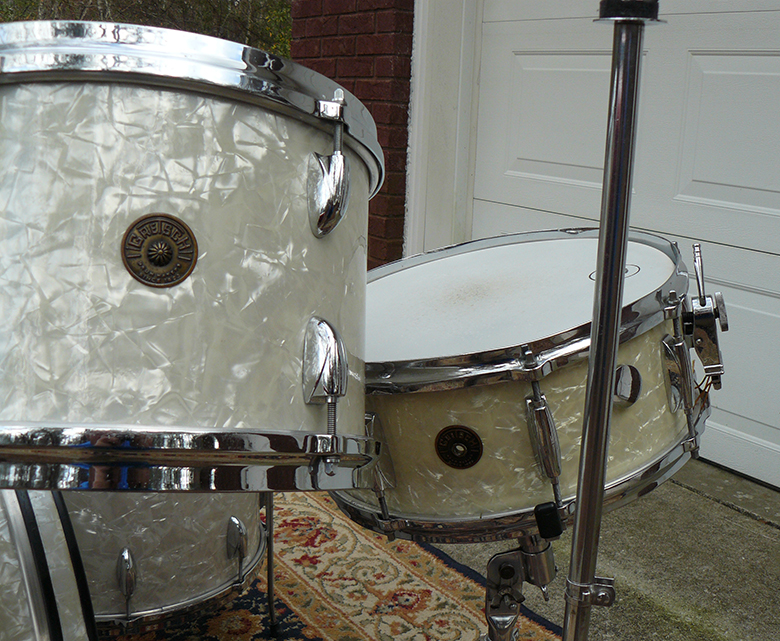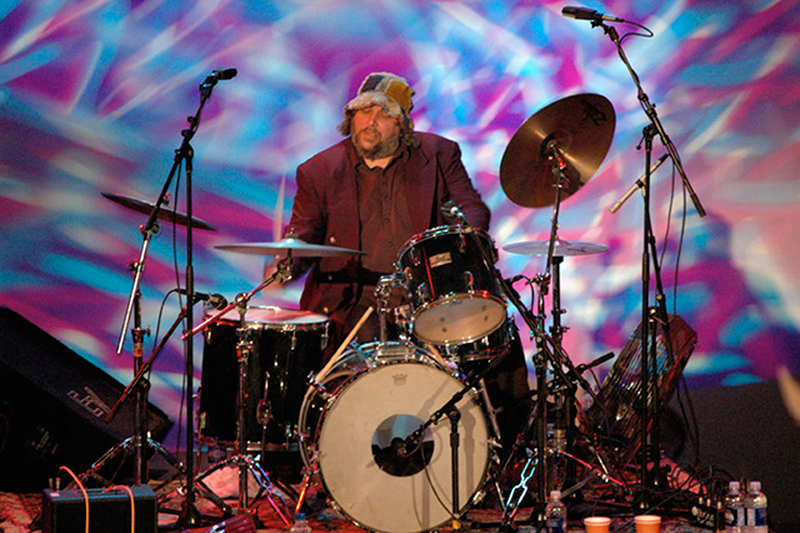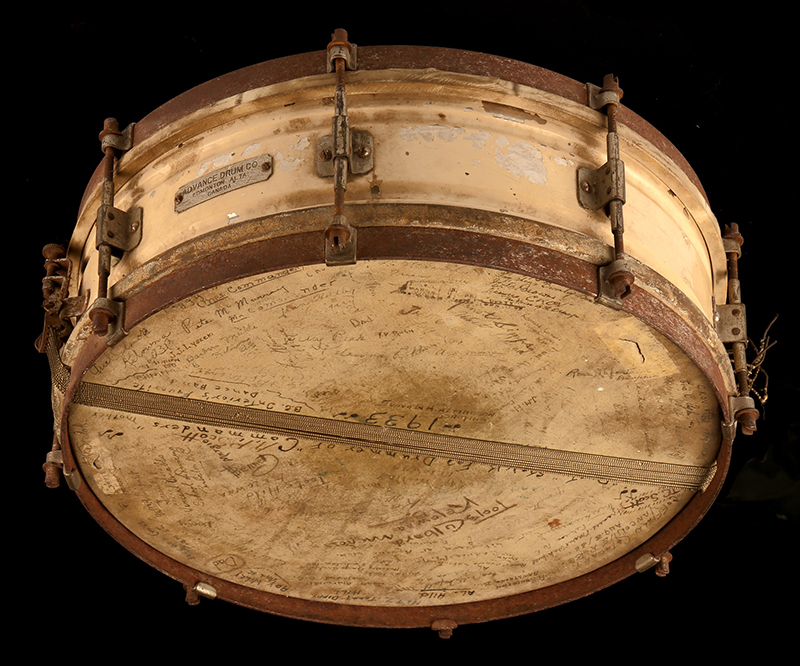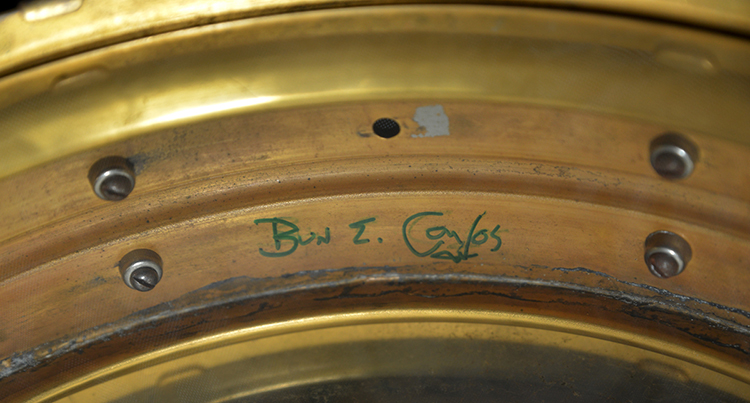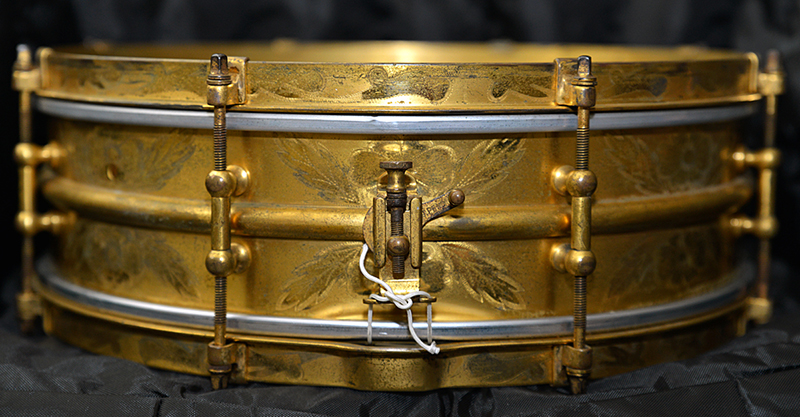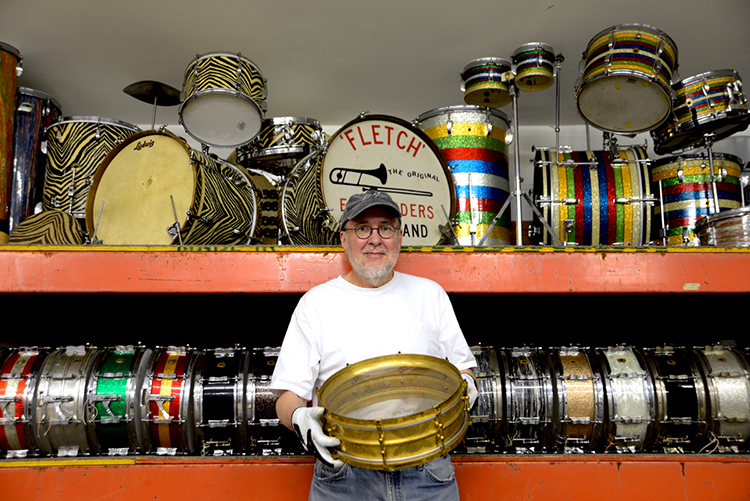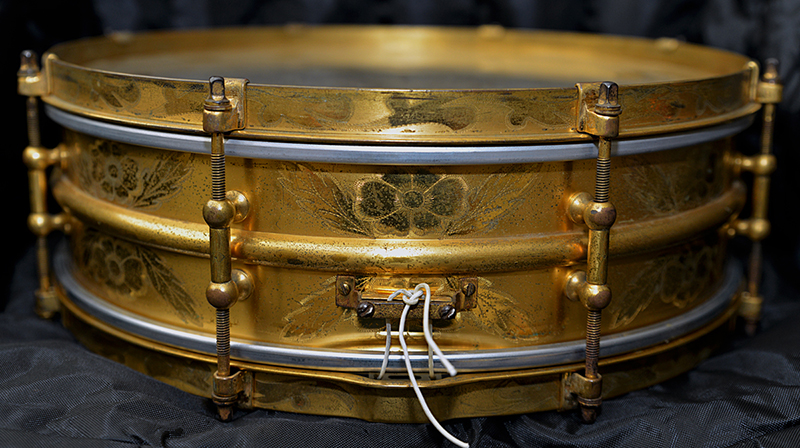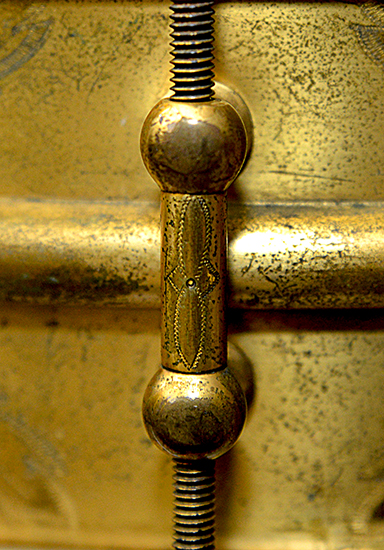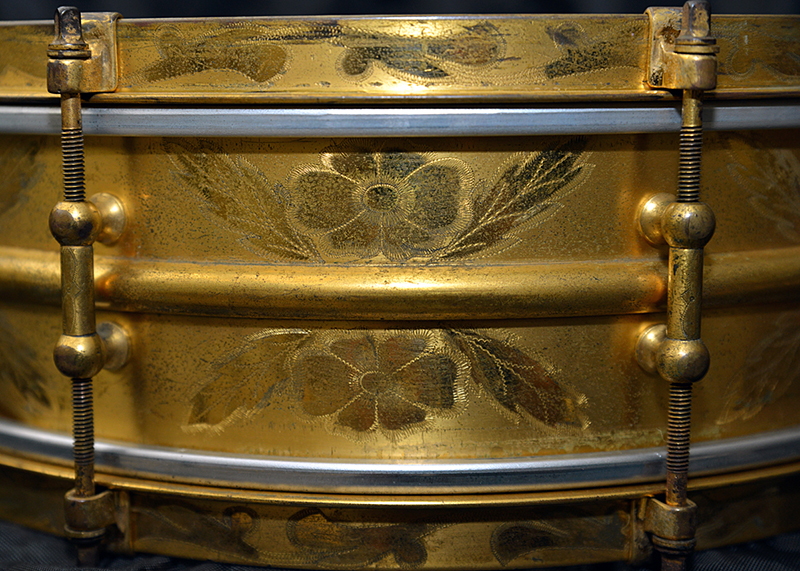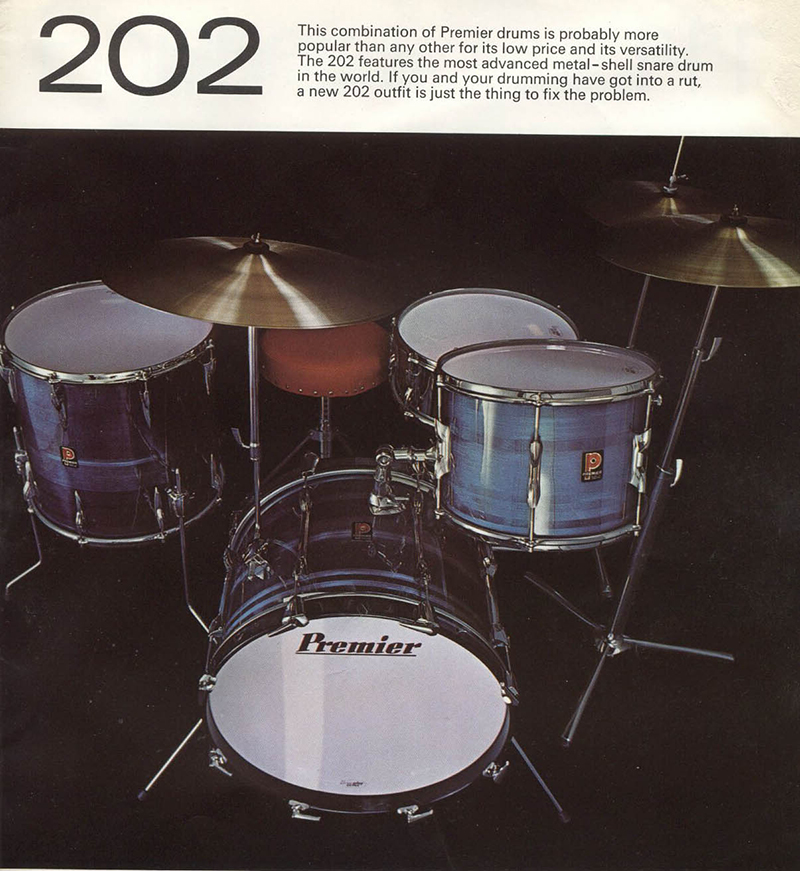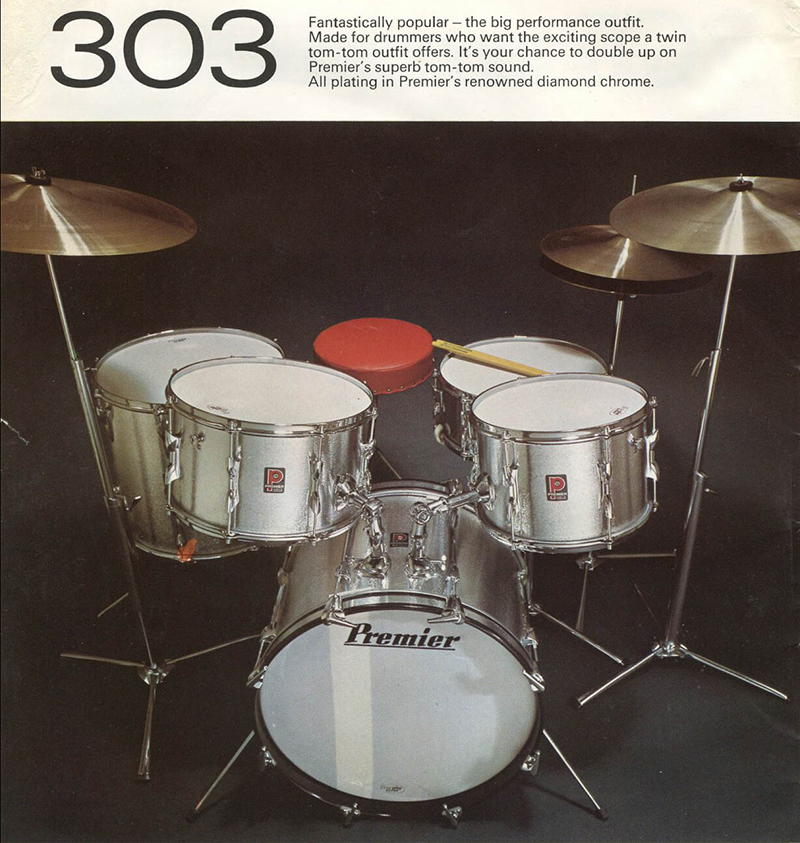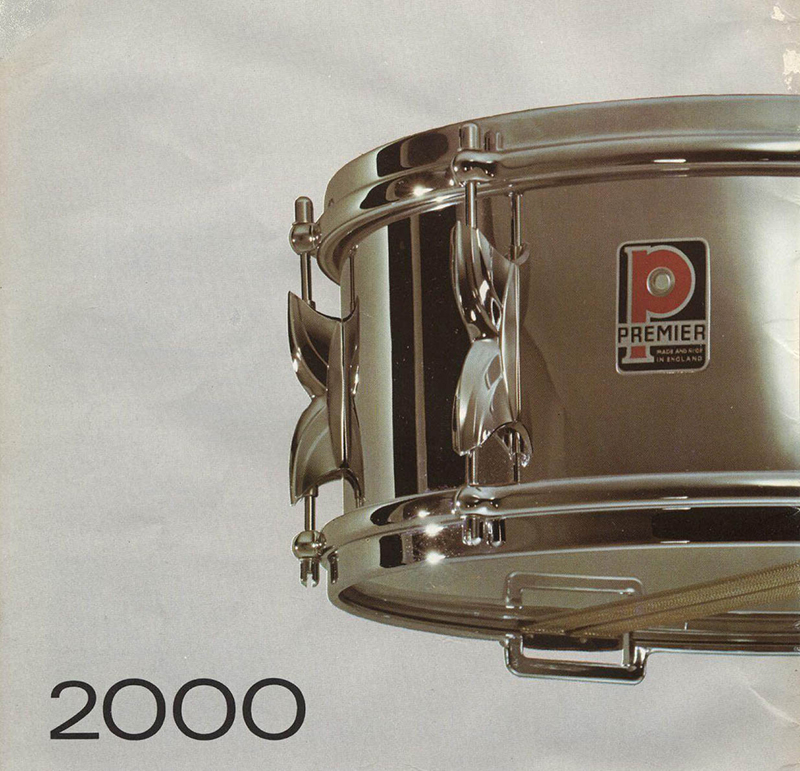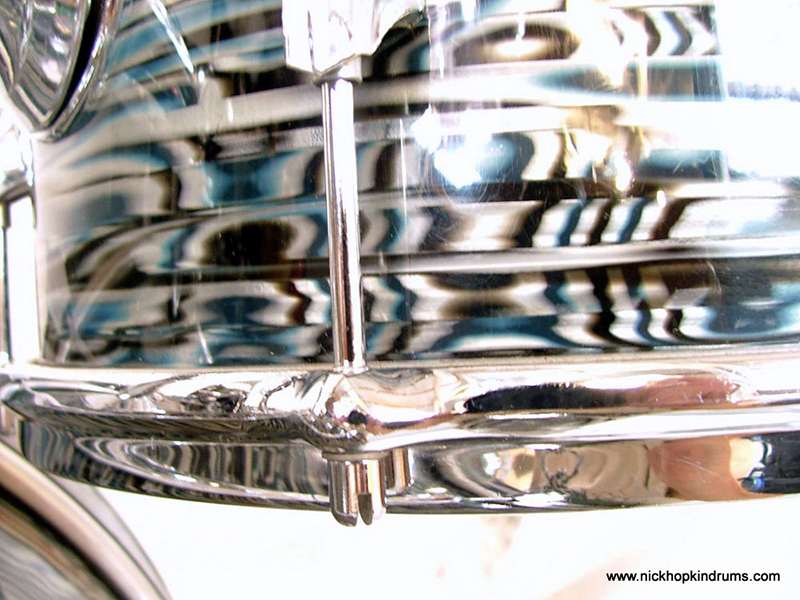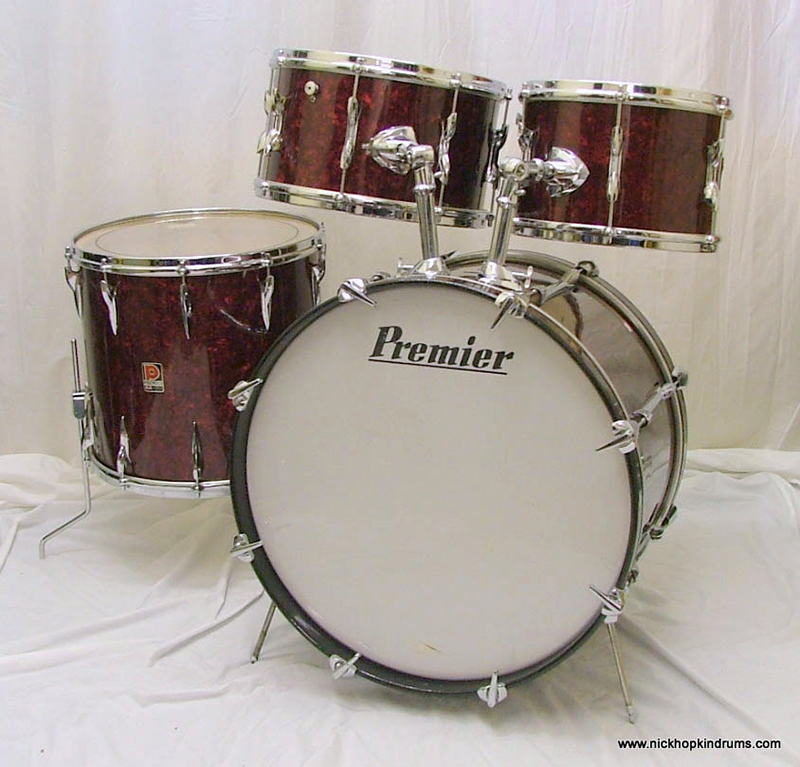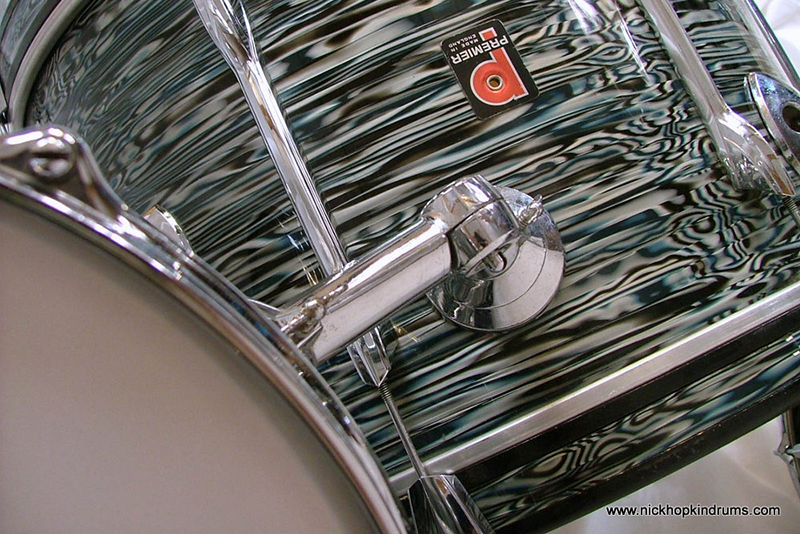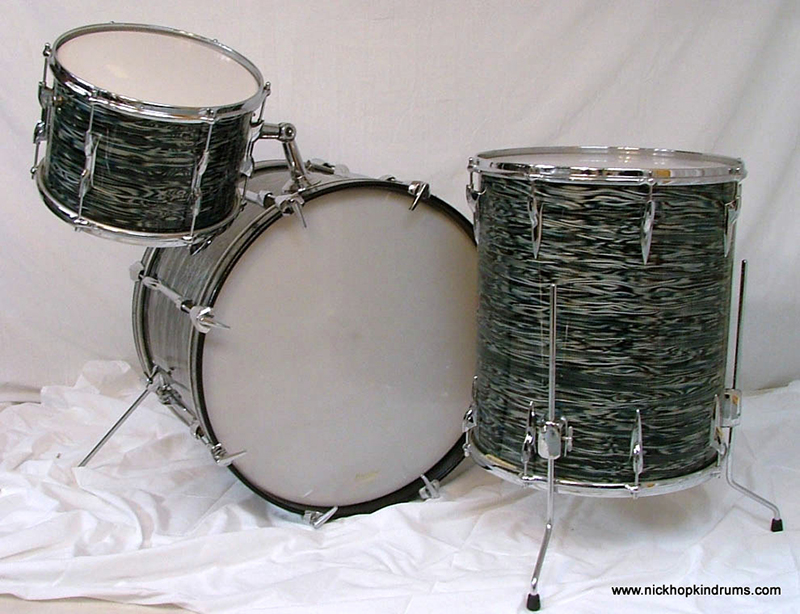Maker: UnknownCirca: 1855-1861 Dimensions: 9”(h) x 13”(dia.)
Drums have been moving creatures into dance and trance since the first rhythms were beat out of an audible object. The rhythms were a natural extension of ourselves; pulsing from our very core and starting with our own heart beats. With the modern inspiration that came at times from catalysts such as the “Ringo effect” or the impact of the likes of Gene Krupa, youngsters have always thought that drums were the coolest! Like most young boys, the generations of the early and mid 1800s, were visibly excited by the sight and sound of martial music propelled by the drums of the drum corps.
Nothing could instill a child with more pride and inspiration than being an accomplished drummer, and nothing short of a grand adventure could propel them to enlist faster.
From the very beginning, the American military has had a long history of recruiting young boys in time of hostilities. In the years following the American Revolution, military and governmental officials tried earnestly to rid the Army of the many under-aged boys that previously helped fill the ranks of the fledgling armed forces that eventually won the war. Over the next several decades the regulations on minimum requirements ebbed and flowed with the changing circumstances of building the new Republic. Regulations for the minimum age and height were always of a lower standard for musicians. Local and state militia units often ignored these regulations for musicians as most were just glad to have them along. Many under aged lads simply accompanied their fathers into the ranks or were orphaned and simply needed a place in the community.
By the time of the Civil War, the minimum age for an enlisted man was eighteen years, with a height requirement of at least five feet, four and a half inches. However, a musician could be enlisted as young as twelve years with no minimum height requirement. As would be expected, many underage boys simply lied about their age in order to enlist, skewing the records forever. Of the records of those who did not lie about their age, we know that there were at least three hundred boys 13 years old and under enlisted in the Union army during the Civil War, and at least 25 who were ten years old or younger.
Two of the younger enlisted drummers were eight year old Avery Brown of Company C, 31st Ohio who, two decades later, billed himself as “The Drummer Boy of the Cumberland”. Also there was 9 year old Albert C. White who accompanied his father, Lt. Cornelius C. White, into the ranks of Company D, 64th Ohio. Disease, hardships, and the casualty of battle would shorten the tenure of many of these small adventurers as they would not last 3 month, but the lot of them stayed the course and even reenlisted for the duration of the War.
Despite the sometimes romanticized idea of all these young drummer boys in the Army, most were never allowed even close to a recruiting officer. They were encouraged to find a “gig” on the home front. These young wizards of the drum were highly sought after…..and the younger the better. P.T. Barnum’s famed New York City museum regularly employed exceptionally talented young drummers during the War. Two of the most notable were Major Willie Bagley and Master Allie Turner, both four years old.
This drum was made shortly before the War started in 1861, during a time of extreme patriotism, and is a miniature version of a full sized military drum. With the War now a reality, production of this type of luxury item would no longer be practical, as most manufacturing would have been concentrated on the war effort. Commonly referred to as a child’s drum, rather than a toy, it sports many of the same features found on a regular sized military drum. The shell is a varnished, single ply of thin ash veneer with red sponged maple counter hoops. A single row of vertical brass tacks reinforce the outer edge of the scarf joint. The central figure of the drum is a decal of an eagle standing on a patriotic shield that was a very popular design from 1855to 1865. However, this type of design was also used decades before and was still in use on drums through the end of the century.
The original cat-gut snares remain and are simply wrapped around a piece of wood that acts as a snare butt and pinched between the hoop and shell opposite to create the tension. The ruptured heads are made of a parchment material very similar to heavy paper and glued to the flesh hoops. Only one leather ear is left present on the drum as the others have long since deteriorated from time and use. The hemp rope is tattered, but also original.
Written on the bottom head in pencil is the name: Harry C. Hartfence. Harry, quite possibly the original owner, may have received this drum as a gift. With the condition of the drum and the fact of the manner in which it was made, especially the condition of the heads and no repairs evident, the probability of a young Harry being the original owner makes good sense. No records indicate he was in the army during the Civil War.
Included with the drum is a very rare, child sized cloth drum sling, which is in very good condition. It is attached to the drum with an equally rare wrought iron sling attachment ring, which is run through one of the rope holes. It seems there was no standard with which to attach the sling to the drum….each drummer or manufacturer had his own way of accomplishing this task. A nice pair of black, under-sized drum sticks round out this grouping.
The drum remains original and untouched; sometimes referred to as “relic or farm-fresh” condition. Only a light cleaning was needed. The shell has a crack that runs about half way around the center of the drum and may be the victim of the inexpensive manner in which it was constructed as well as the lack of reinforcement at the scarf joint area. After all, it was only a child’s drum but, nonetheless, a silent testament to the patriotic zeal and seemingly ever present desire of youngsters to make the music. This small instrument was certainly made for those who had to stay behind…..…those too young to die.
From Lancaster County, PA... thoughts from the Shop.
-Brian Hill

